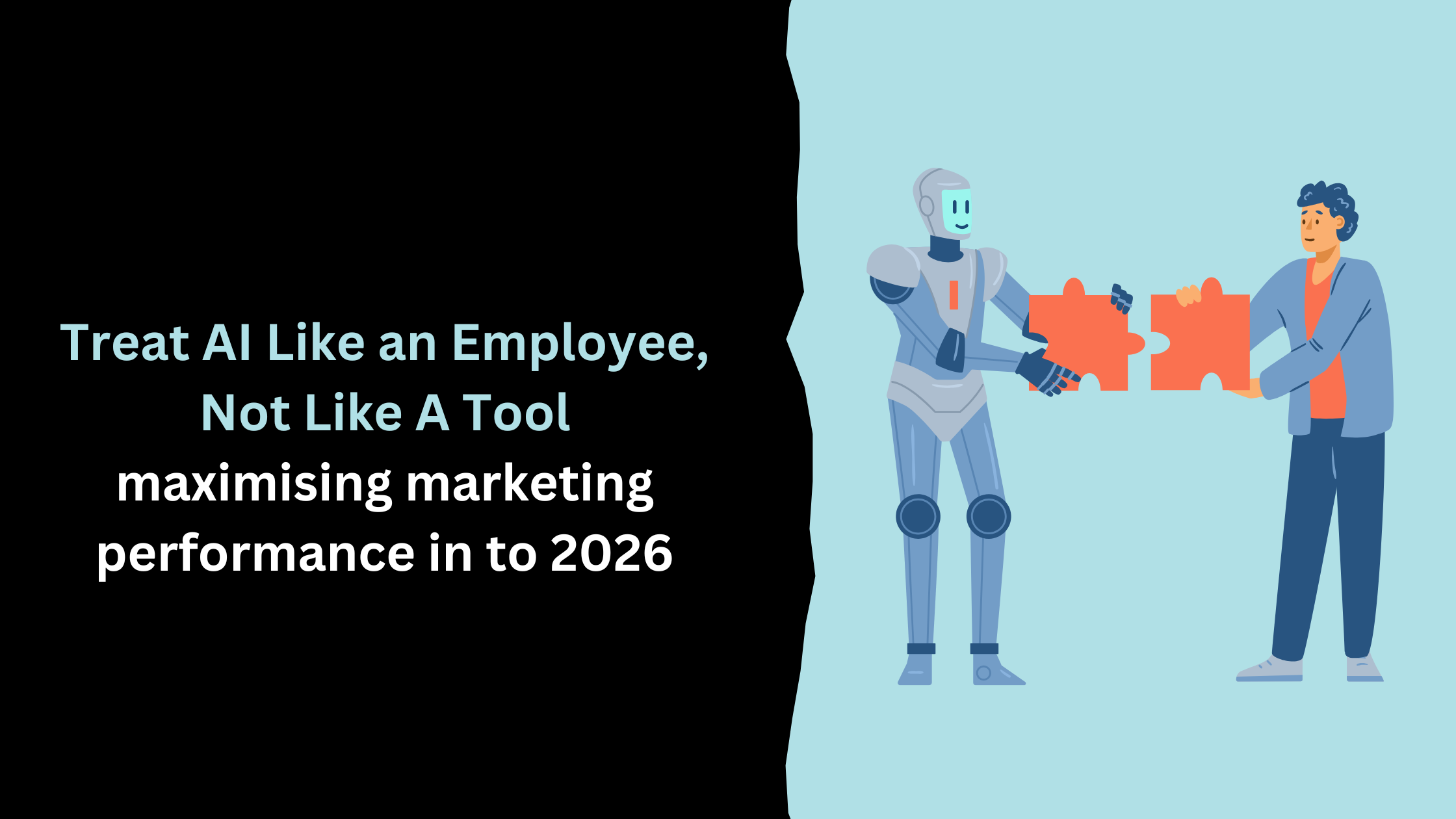Marketers need to be treating AI like employees
AI shouldn’t be treated as a tool — it should be managed like an employee. At SearchUp, we see AI as part of the marketing team: a capable specialist that performs best with clear briefs, structured prompts, and iterative feedback. By refining instructions and applying human oversight, marketers can use AI to identify issues in client ad accounts, assess platform or policy changes, and produce high-quality ad copy at scale. The result is a smarter, faster, and more consistent marketing operation — powered by collaboration between human creativity and AI precision.

Table of Contents
Artificial intelligence is no longer a novelty in marketing — it’s part of the workforce. Yet many teams still treat AI as a tool rather than a team member. That mindset caps performance. The future isn’t humans using AI; it’s humans leading AI.
Treat AI like an employee — one that thrives on clarity, structure, and iteration — and you unlock compound gains across your marketing engine.
From Tool to Teammate
Great marketers already manage specialists: copywriters, analysts, CRO leads. Each delivers best-in-class work when given sharp briefs, useful constraints, and clear success criteria. AI is no different. When you treat AI like a collaborator and manage it with intent, it becomes a force multiplier.
At SearchUp, our role is to orchestrate a hybrid team of humans and AI — assigning the right model to the right job, setting standards, and holding outputs accountable.
Clarity Is the New Creativity
Quality in, quality out. Tiny differences in phrasing can change results by measurable margins. Direct, unambiguous instructions outperform “softened” prompts. It’s not about removing politeness; it’s about removing ambiguity. AI reads clarity as signal.
We coach clients to brief AI like they would a junior specialist: define objective, audience, constraints, format, and evaluation criteria up front.
The Art of Refinement
Performance comes from iteration. If the first output isn’t right, we don’t discard the system — we refine the brief:
- Add context when outputs feel generic
- Specify tone, format, and length
- Provide examples and counter-examples
- State non-negotiables and decision rules
These micro-adjustments compound. Over time, your AI “employees” internalise standards just like humans on a well-run team.
How SearchUp Leads AI Inside Real Marketing Work
1) Forensic Account Reviews by Timeframe
Use case: Pinpointing when performance drift began — and why.
How we work: We ask AI to analyse ad accounts with a precise time anchor (e.g., “Investigate anomalies beginning May 2025”). We then direct it to cross-reference likely catalysts:
- Platform updates (e.g., Shopify theme or checkout changes)
- Policy shifts or disapprovals in Google Ads
- Bid strategy changes, audience exclusions, feed modifications
- Tracking breaks (UTM conventions, GA4 event changes, consent mode)
The output isn’t a vague list; it’s a timestamped hypothesis set with evidence, impact estimates, and a remediation checklist. Human specialists then validate and prioritise fixes.
2) Policy & Platform Change Triage
Use case: Rapidly isolating whether a drop is due to Google Ads policy or a Shopify configuration.
How we work: We direct AI to compare pre/post-change metrics, label affected campaigns, summarise disapproval patterns, and propose compliant alternatives (copy variants, landing-page wording, schema updates). Humans make the final call and implement.
3) High-Velocity, High-Standards Ad Copy
Use case: Generating volume without diluting brand or performance.
How we work: We never say “write some ads”. We brief like this:
“Produce 15 variants per product line. Supply a mixture of short and long copy. Each must include proof points (data, awards, social proof), USPs (unique mechanism, delivery promise, guarantees), and calls to action tuned to intent level. Output in a table with headline/description/path, and tag each with the primary benefit and audience segment.”
Then we check thoroughly: brand voice alignment, compliance, readability scores, duplication detection, and historical performance tagging. Only copy that clears review is launched.
4) Standardised Prompts as Operating Procedures
We turn winning prompts into living SOPs — versioned, annotated, and paired with acceptance criteria. Think of these as job descriptions for AI employees. Everyone on the team can reuse and improve them, which compounds quality and speed.
What This Delivers
- Faster diagnostics, fewer blind spots: Time-anchored, evidence-led investigations.
- Repeatable excellence: SOP-grade prompts that scale across products, markets, and teams.
- Human assurance: Specialists who validate, decide, and own outcomes.
- Compounded performance: Each iteration trains the system and the team.
The Takeaway
AI won’t replace marketers — but marketers who know how to lead AI will outperform those who don’t. Treat AI as an employee: brief it clearly, measure it rigorously, and refine it continuously. That’s how modern teams win.
If you’d like to see how SearchUp builds AI-enabled workflows for account audits, policy triage, and high-quality creative at scale, we’ll show you what this looks like on your data — and where the fastest wins are.
Get in touch today
complete the form below for an informal chat about your business






.png)
